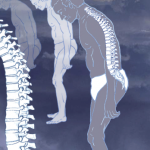Rheumatic diseases are worldwide in prevalence, but important differences in clinical presentations can occur among patients in different countries, as well as racial and ethnic groups. These differences are important in understanding disease pathogenesis, as well as determining clinical outcomes. Using two large registries, this study compared clinical and demographic features of Ibero-American patients with radiographic axial SpA (r-axSpA) with those of European patients.
The study found that, compared with patients from Europe, Ibero-Americans patients showed more peripheral manifestations, more damage and worse function. The Ibero-Americans also had greater use of conventional synthetic disease-modifying anti-rheumatic drugs (DMARDs) and lesser use of biologic DMARDs. Disease manifestations also varied among racial groups. The obvious question relates to the origin of these differences and the respective roles of environment (including diet) and genetic factors in determining clinical manifestations because— part of the environment—access to medication also impacts outcomes, such as damage.
Although much research is needed to understand the interplay of the various factors in disease etiology and outcome, these differences are currently very relevant in interpreting clinical trials, which increasingly involve patients from all over the world. In discussing results of clinical trial, I have long believed that it is important to consider the composition of the study population in terms of the country of origin and region of the world of the trial sites. This study reinforces this view.
Sex-Related Differences in Biologic Efficacy
Abstract 0599: Chaudhary et al.3
axSpA comes in two main varieties (i.e., radiographic and non-radiographic) and affects both sexes, albeit with some differences. These differences include certain clinical findings and, possibly, pathogenesis because the frequency of HLA-B27 positivity is higher in men than women. To determine whether men and women also differ in their response to biologic therapy, Chaudhary et al. performed a systematic review and meta-analysis of the efficacy of tumor necrosis factor (TNF) inhibitors and IL-17 inhibitors in 11 studies, including clinical trials and registries, as well as retrospective and prospective cohort studies.
As expected, the frequency of HLA-B27 positive patients was higher in men than women. Overall, the studies indicated that men achieve higher response rates than women and that men are more likely to achieve a low disease activity state than women when treated with biologics.
Many explanations for these findings are possible (e.g., differences in sex-based responses to cytokine inhibition and the impact of HLA-B27 on underlying pathogenesis). Because dosing was not weight based, a difference in drug levels in men and women should not be an explanation unless female sex leads to differences in drug metabolism or clearance, including generation of anti-drug antibodies.


